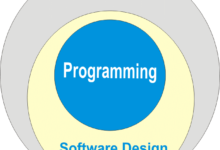Types of design patterns
Types of design patterns
There are three fundamental types of design patterns that are used to design the perfect pattern of the software.
Structural Patterns:
Structural patterns are concerned with both classes and objects. In the structural Pattern that has been defining the communication/relationship between objects and classes. These patterns are allowed to add the new functionality of the objects. Some other types of structural patterns are defined below.
Types of structure patterns:
-
Decoder Pattern:
Rick Mercer has defined the decoder design pattern. The decoder is used to add the individual object without effect the sum of other objects. The decoder also provides the flexibility to extend the subclasses of the object. At the run-time, the decoder provides the dynamical behavior of the objects. The decoder should be used as the wrapping technique. This extends the functionality of the object by the wrapping of an object in the decoder classes.
The following steps are used for implementing the decoder pattern.
- Adding the pointer components in the decoder classes.
- A decoder of classes and components of classes.
- Component method and the component pointer that redirects about the decoder class.
-
Facade Pattern:
This pattern is commonly used in the complex series of the object to perform a task. The façade pattern also executes a single task instead of the group task and also defines the simplified interface.
-
Adapter Pattern:
This type of pattern is used to match the different classes and objects interface and the pattern is used to design the structure of pattern that repurposes a class with a different interface and allows a system to call with different methods.
-
Bridge Pattern:
The next type of pattern is the Bridge. The goal of the bridge pattern is the difference between abstraction and implementation. Look at another hand the bridge pattern is separate logic behavior from the code of look and feel and which we have seen in the other visual applications.
-
Proxy Pattern:
The next type of pattern is the proxy pattern. The main goal of the proxy pattern is to define the object of the wrappers classes. The proxy class pattern is also allowed to add the additional behavior can be the effect on the wrapped object without to need the classification/modification of the object class behavior.
-
Composite Pattern:
The next type of pattern is the composite pattern. It is used to compose the object into a simple tree structure form and present the whole part of the hierarchies. In the composite pattern, the clients are treated with the individual object and uniformly.



